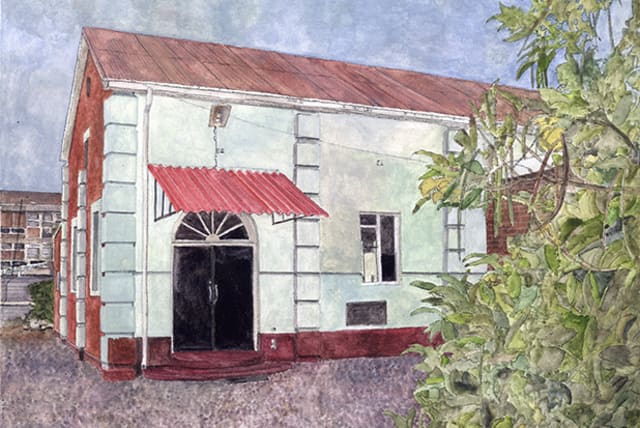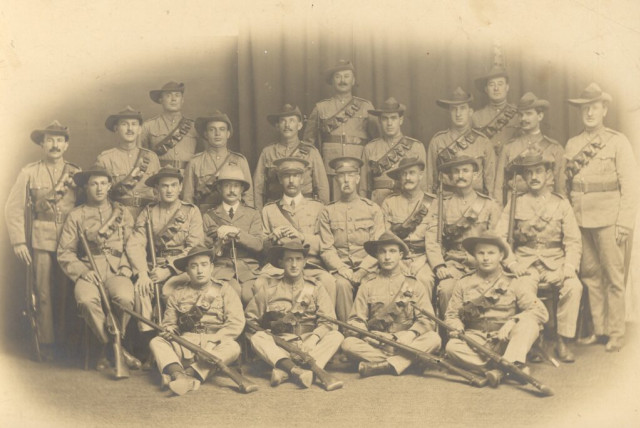The journey of a Torah scroll from South Africa and Zimbabwe

The journey of transporting an unused Torah scroll out of a dying Jewish community in Zimbabwe.
We Jews have a rich and tragic tradition of meandering across the globe over millennia. And wherever we have wandered, we have carried with us the anvil on which the perpetuity of our people is forged – the Torah, which, by tradition, was gifted to the Jewish people and all of humanity at Sinai on Shavuot, some 3,400 years ago.
Yet few have roamed to a more remote location, both geographically and culturally, than the Jews of Zimbabwe. And there are not many Jewish communities that have existed for such a short time span as that of this troubled, landlocked country in southern Africa, formerly known as Rhodesia.
Until the 1880s, the territory was inhabited by indigenous African peoples.
The Jews of South Africa and Zimbabwe
Cecil John Rhodes (1853 –1902) was a British-born mining magnate, imperialist and politician who served as prime minister of the Cape Colony from 1890 to 1896. He was one of the founders of the British South Africa Company, formed in 1889 with the aim of colonizing and exploiting the rich resources of south-central Africa. The company established the territory of what is now Zimbabwe and Zambia, which it named “Rhodesia” after its founder.
Simultaneously, the first Jews began to arrive, emanating mainly from Eastern Europe, fleeing poverty and persecution, as well as from Western Europe – all hoping to get a new start in a new land.
Quite remarkably, by 1895 two Jewish congregations had been established in what are now the two main cities, Salisbury (now Harare) and Bulawayo, although at the time they were not much more than villages. Rhodes himself remarked, “If the Jews come, my country is all right.”
Later, a thriving Sephardic congregation emerged, its members migrating mainly from Rhodes Island (no relation). The community grew and prospered, and reached its zenith in the 1960s with a total of some 7,000 souls, centered mainly in those two big cities, as well as in a few very small communities.
One of them existed in the town of Gweru (formerly Gwelo) in the center of the country, established in 1901. Prayer services were held in private homes until a modest synagogue was built in 1933.
I spoke to Clive Shiff, who grew up in Gweru. Born in 1930 and educated in the country, he has recently retired (do the math!) from Johns Hopkins University in Baltimore, Maryland, as an esteemed parasitologist and leading authority in malaria research.
His London-born father, Harry, arrived in the territory in 1894 at age two. As an adult, he opened a general store in Gweru, selling just about everything. Like many of his generation, Clive attended boarding school in Salisbury, where the local rabbi prepared him for his bar mitzvah. However, despite the fact that there were just 40 Jews in the town, Clive celebrated the occasion in the Gweru synagogue, reading from the local Torah scroll.
One of the features of Gweru is its air force base, which was used by the British as a training center for fighter pilots. One of the recruits who learned to fly there was Ezer Weizman. In the course of his training, Weizman’s plane crashed. As a volunteer nurse, Clive’s mother, Teddy, attended to him. She must have done a good job because Weizman went on to become chief of the Israel Air Force, and then president of Israel.
In 1965, the white minority Rhodesian government unilaterally declared independence, creating a political entity similar to apartheid-era South Africa. From the early 1970s, war raged between white-ruled Rhodesia and Black Nationalist forces led by Robert Mugabe and Joshua Nkoma, with the country finally transitioning to internationally recognized majority rule in 1980.
Given the increasing uncertainty surrounding its physical and economic security, from the 1970s Jews began to leave Zimbabwe. Many headed to South Africa. The Zionist nature of the community resulted in a relatively large number making aliyah. This exodus accelerated as the situation worsened. The Jewish communities dwindled, and most ceased to exist. By the mid-1980s, the unused Torah scroll in Gweru was gathering dust in the modest Holy Ark.
THE STATED aim of the Menorah organization, established in Israel by Moshe Moshkowitz, is to locate defunct Jewish communities around the world, with a view to retrieving items of Jewish significance and bringing them to Israel for use in communities around the country. Through Rabbi Eugene Dushinsky of Cape Town, Moshkowitz became aware of the Gweru Torah.
However, transporting the scroll out of Zimbabwe was fraught with uncertainty. There were severe restrictions on the transfer of financial assets out of the country, and it seemed clear to them that permission to export an item of such monetary value would almost certainly have been denied.
The prevailing atmosphere in Zimbabwe is well described by architect-artist and synagogue researcher Jay A. Waronker’s experience. Visiting Gweru to document the synagogue, he was apprehended by plain-clothed officers and taken to the police station, where he was questioned in a hostile fashion. Only through the intervention of the US Embassy in Harare was he released and his confiscated camera and passport returned.
Rabbi Dushinsky knew Capetonians Gilad and Micky Stern as a resourceful couple with a deep commitment to Jewish communal life. Micky had grown up in Harare, and in 1987 the couple planned a “roots” family driving vacation; a 5,000 km. round trip to Zimbabwe with their four children aged seven to two. The rabbi called Gilad.
They would have to travel to Gweru, collect the Torah, pass through a number of check posts along the way, and cross through the intimidating border post from Zimbabwe to South Africa. If the officials discovered the valuable item in their possession, they might have confiscated it. Moreover, the entire family would face a perilous situation.
Gilad explains, “We were aware that the border inspection might well be rigorous. The border authorities were often officious and aggressive. On the way into Zimbabwe, we had waited in a queue for two hours to hand in our customs declaration. On the line of the official form which stated Place and Date of Birth, I had inadvertently written the date, followed by the place. The customs official said it was unacceptable – place of birth had to be first. He sent us to the back of the queue!”
Recalling vacations to South Africa as a child, Micky came up with a strategy. She remembered that rather than hide banknotes in an elaborate, inconspicuous spot in order to bootleg money out of the country, her father, Gerald Goldstein, had placed them in a bag of oranges, which he planted in full view among the kids on the back seat of the car. It worked every time.
Gilad continues, “We removed the cover of the scroll and placed it with our clothes in a suitcase on the roof rack of the car. The area in the back of our station wagon was strewn with the kids’ toys, games and food wrappers. So we unraveled the Torah scroll somewhat and positioned it in the midst of the chaos. Was it disrespectful to let the Torah lie amongst the debris of a long road trip? Under normal circumstances that would be clear, but this was an unusual situation.
“The honor of the Torah could only be assured by staging a scene which seemed to indicate its lack of value. We passed through a number of roadblocks, approached the customs post with feigned nonchalance, and were able to pass through the border with no questions asked.”
The Sterns then re-wrapped the Torah, restored it to a place of dignity in the car, and with a great sense of relief, drove back to Cape Town. There, they handed it over to a friend, Roy Sher, who took it to Israel and delivered it to a Menora representative. Soon after, the scroll was delivered to Yatir, a settlement in Drom Har Hebron, where it is in active use to this day.
THE GWERU Synagogue was subsequently sold to a local church. The last Jew died in 2003, ending a century of Jewish presence in this remote town, during which just 52 Jews were buried in the local cemetery.
The chronicle of achievement of the Jews of Zimbabwe in all aspects of both Jewish and civic life is remarkable, far surpassing its small size. Today, fewer than 100 Jews remain, the majority of whom are elderly. Yet the rich fiber of this improbable, exceptional community lives on in its members and their descendants around the world, who continue to play their role in the continuum of the Jewish people.
And it echoes each time that Torah scroll is lovingly taken from a Holy Ark in the Land of Israel and the ancient words are intoned – those sacred words that link Jews together wherever they may be across the globe.
The writer produces ‘Gift of a Lifetime’ videos for those wanting to pass on their stories to their offspring. He thanks Dave Bloom for his kind assistance. To view Dave’s archive of Zimbabwe’s Jewish community, see www.zjc.org.il.
Jerusalem Post Store
`; document.getElementById("linkPremium").innerHTML = cont; var divWithLink = document.getElementById("premium-link"); if (divWithLink !== null && divWithLink !== 'undefined') { divWithLink.style.border = "solid 1px #cb0f3e"; divWithLink.style.textAlign = "center"; divWithLink.style.marginBottom = "15px"; divWithLink.style.marginTop = "15px"; divWithLink.style.width = "100%"; divWithLink.style.backgroundColor = "#122952"; divWithLink.style.color = "#ffffff"; divWithLink.style.lineHeight = "1.5"; } } (function (v, i) { });

